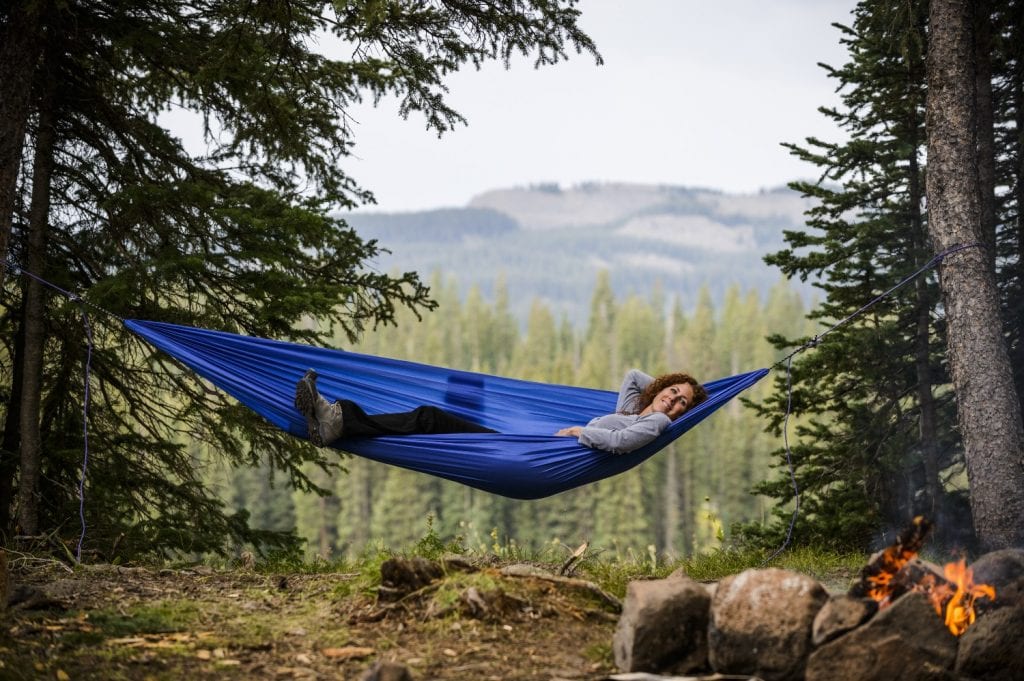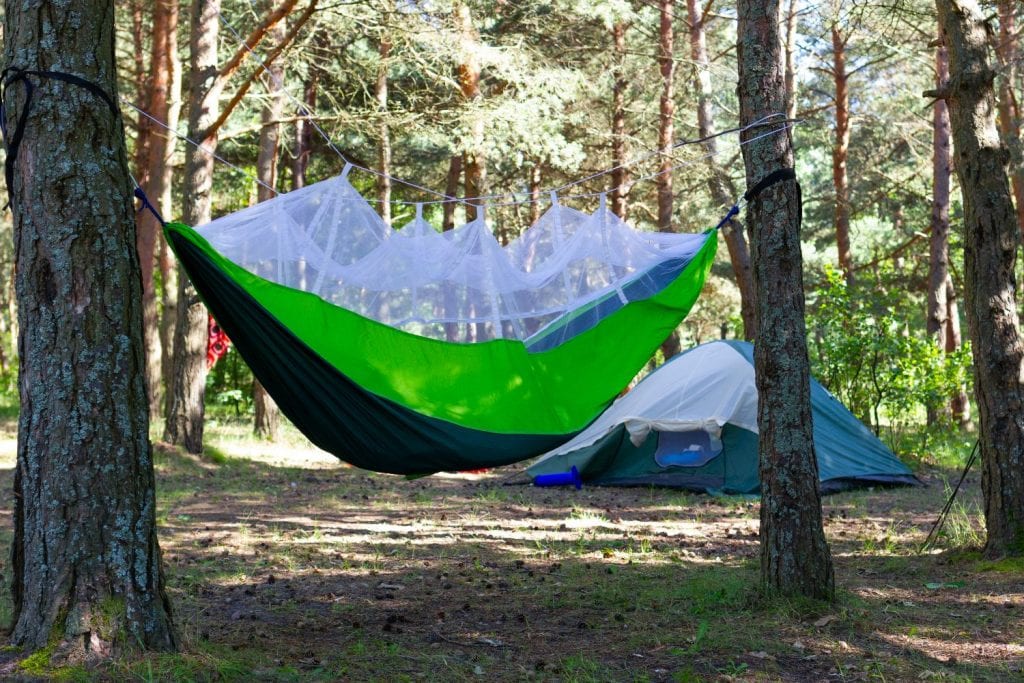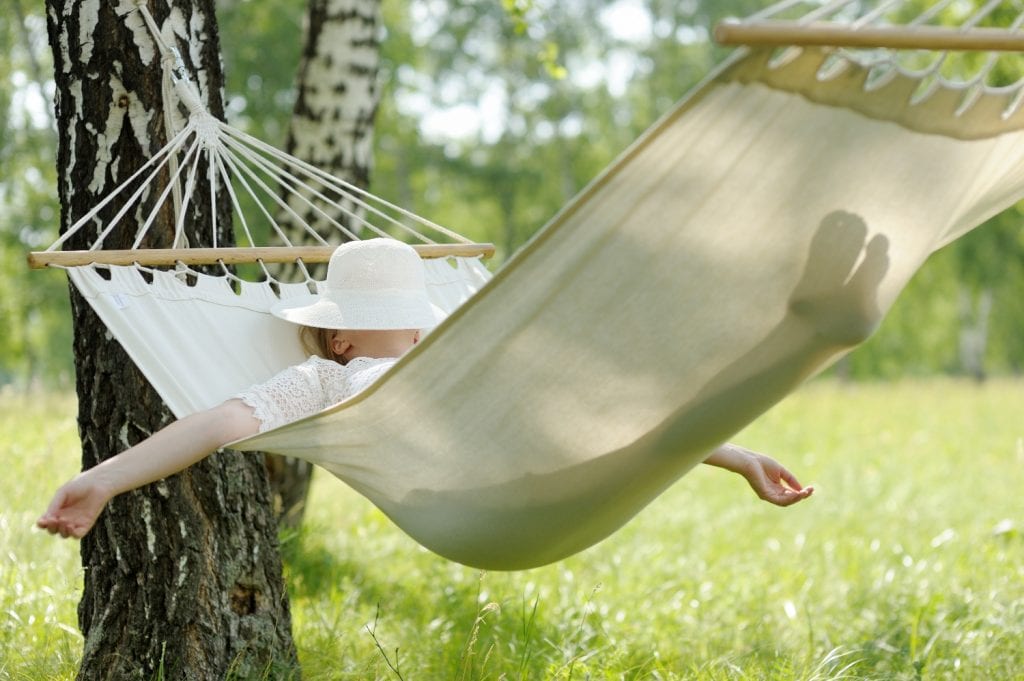Read on to learn about the pros and cons of sleeping in a hammock and discover some expert hammock camping tips.

A hammock is the definition of relaxation. If done right, it can make you feel like those people in tropical commercials, without a single care in the world.
We have prepared a guide on hammock camping for beginners so you know exactly what to do when setting up your spot.
Tent or hammock camping?
A hammock is your best friend on any camping trip, whether you decide to have company or travel solo. Hammock camping means ditching your tent and only bringing your hammock for sleeping. This may feel extreme if you have never camped like this before, but don’t worry. As with anything new, preparation is key.
The number one advantage is, of course, not having to bring and set up your tent. Hammocks are light and take up significantly less room. If you have no experience with hammocks, do not set out to your first adventure when the weather is cold and unpredictable. It’s better to play it safe first.

Choose your trees
The single most important tip is to choose your trees very, very carefully. Make sure not to hang your hammock next to an ant colony, a wasp hive or a tree covered in dripping sap. Think about sun, shade, and how this will affect your time in the hammock.
But the most important thing when deciding how to hang a camping hammock is that the trees should be well spaced. If your trees are too close to each other, you will not be able to get a good night’s sleep as the hammock will be too loose. After you tie your hammock to the chosen trees – the instructions on how to do this should be included with your hammock – test it and adjust if necessary.
Be safe
Don’t suspend your hammock above water, sharp rocks or bushes and don’t hang it too far up from the ground – you don’t want to fall and hurt yourself. Hanging your hammock low will also help if you are not sure how to get out of a hammock. But don’t believe the cartoons and movies – it is pretty hard to fall flat out of a hammock. You just need to be reasonably careful and you’ll be fine.
Other safety measures include hanging a tarp above to protect you from rain or dew and getting a hammock with a bug net if the area is prone to mosquitoes or other pests.

Choose the right sleeping position
Sleeping in a hammock takes some time getting used to, so you will need to be patient. It is best to lie diagonally as this creates more space and gives you more room to position your arms and legs. Something between lying on your back and your side is usually the most comfortable position, but take some time and explore what works for you.

Get warm and cosy
Even if it is the middle of the summer, night temperatures can drop significantly so it is very important to always bring at least a sleeping bag, if not an underquilt. Air flows freely around your hammock so even a light breeze can make you very cold, especially in a light nylon hammock. Pillows, blankets and comfortable clothes are a must, too, for a good night’s sleep.
And that’s it! Now you’re all set to plan your trip and lounge around in your hammock day and night. Just don’t overdo it – remember to hike and explore!